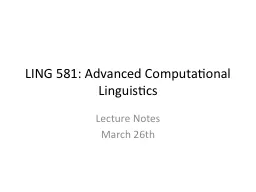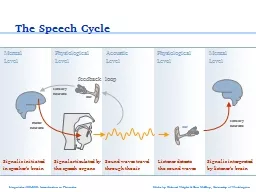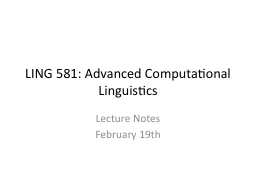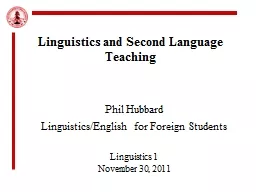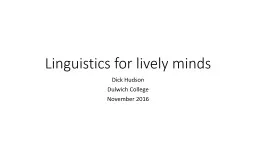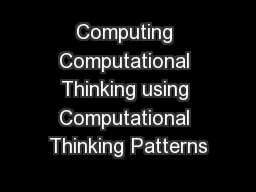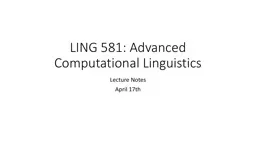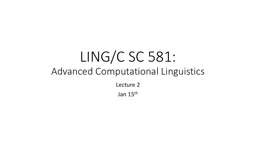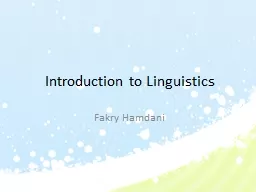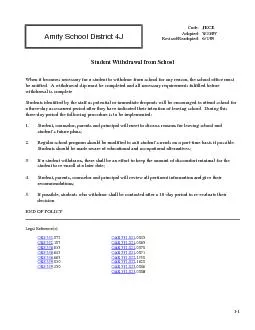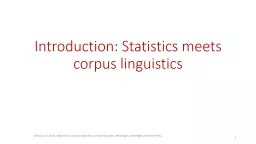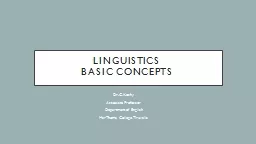PPT-LING 581: Advanced Computational Linguistics
Author : test | Published Date : 2015-10-26
Lecture Notes March 26th Catching up WordNet Did everyone manage to install WordNet 30 package wnb WordNet browser shell export PATH usr localWordNet30bin PATH
Presentation Embed Code
Download Presentation
Download Presentation The PPT/PDF document "LING 581: Advanced Computational Linguis..." is the property of its rightful owner. Permission is granted to download and print the materials on this website for personal, non-commercial use only, and to display it on your personal computer provided you do not modify the materials and that you retain all copyright notices contained in the materials. By downloading content from our website, you accept the terms of this agreement.
LING 581: Advanced Computational Linguistics: Transcript
Download Rules Of Document
"LING 581: Advanced Computational Linguistics"The content belongs to its owner. You may download and print it for personal use, without modification, and keep all copyright notices. By downloading, you agree to these terms.
Related Documents

